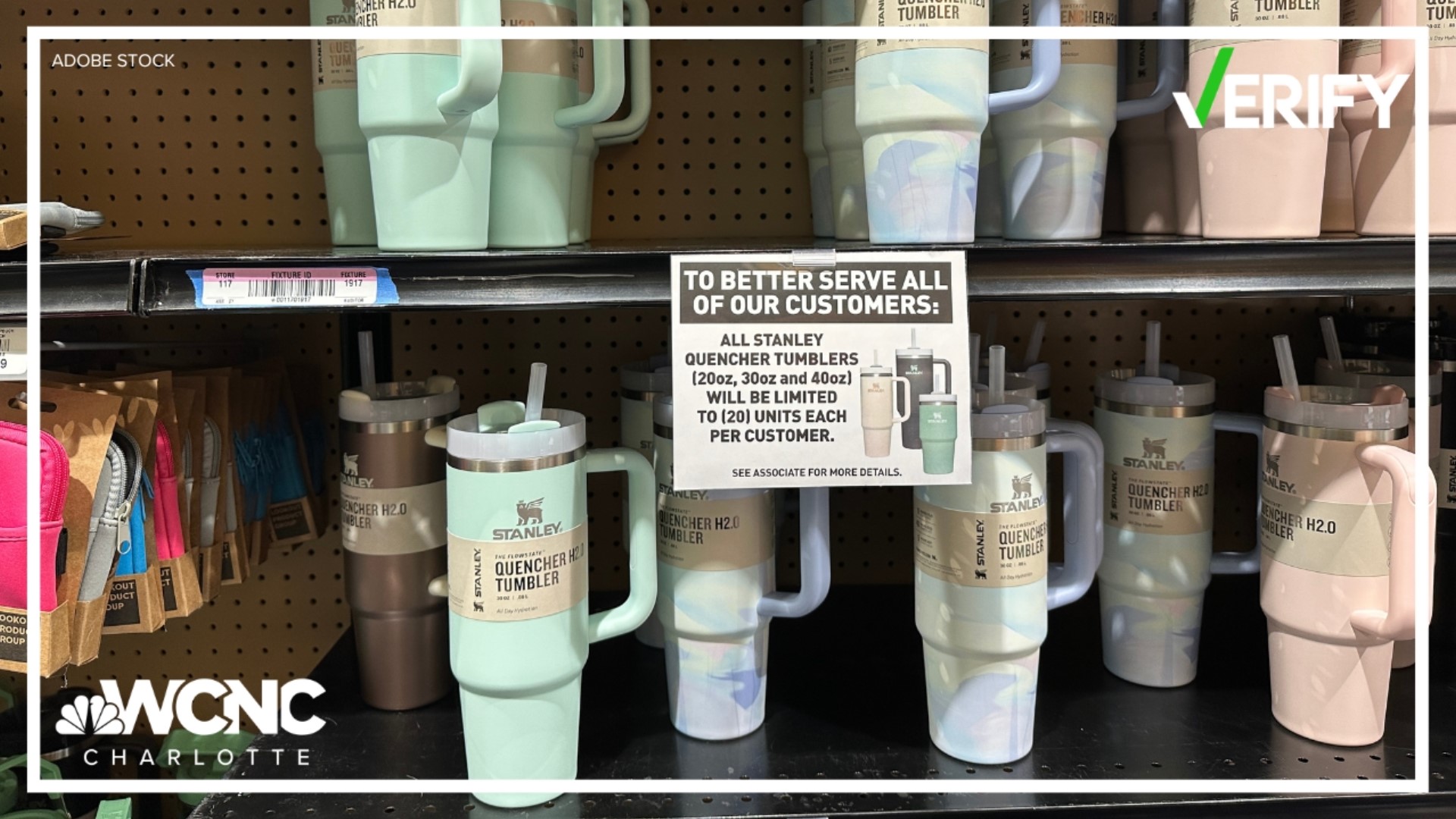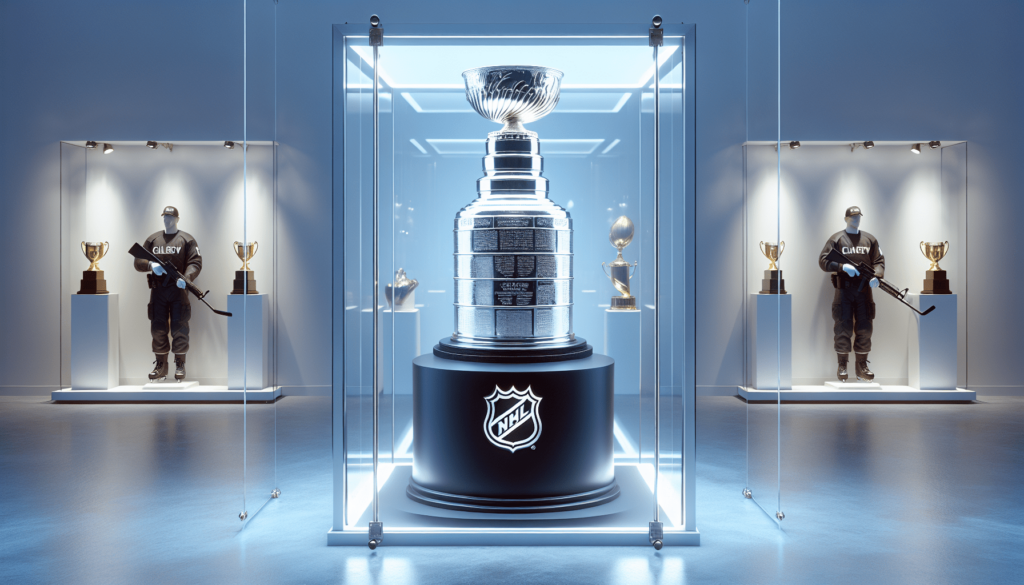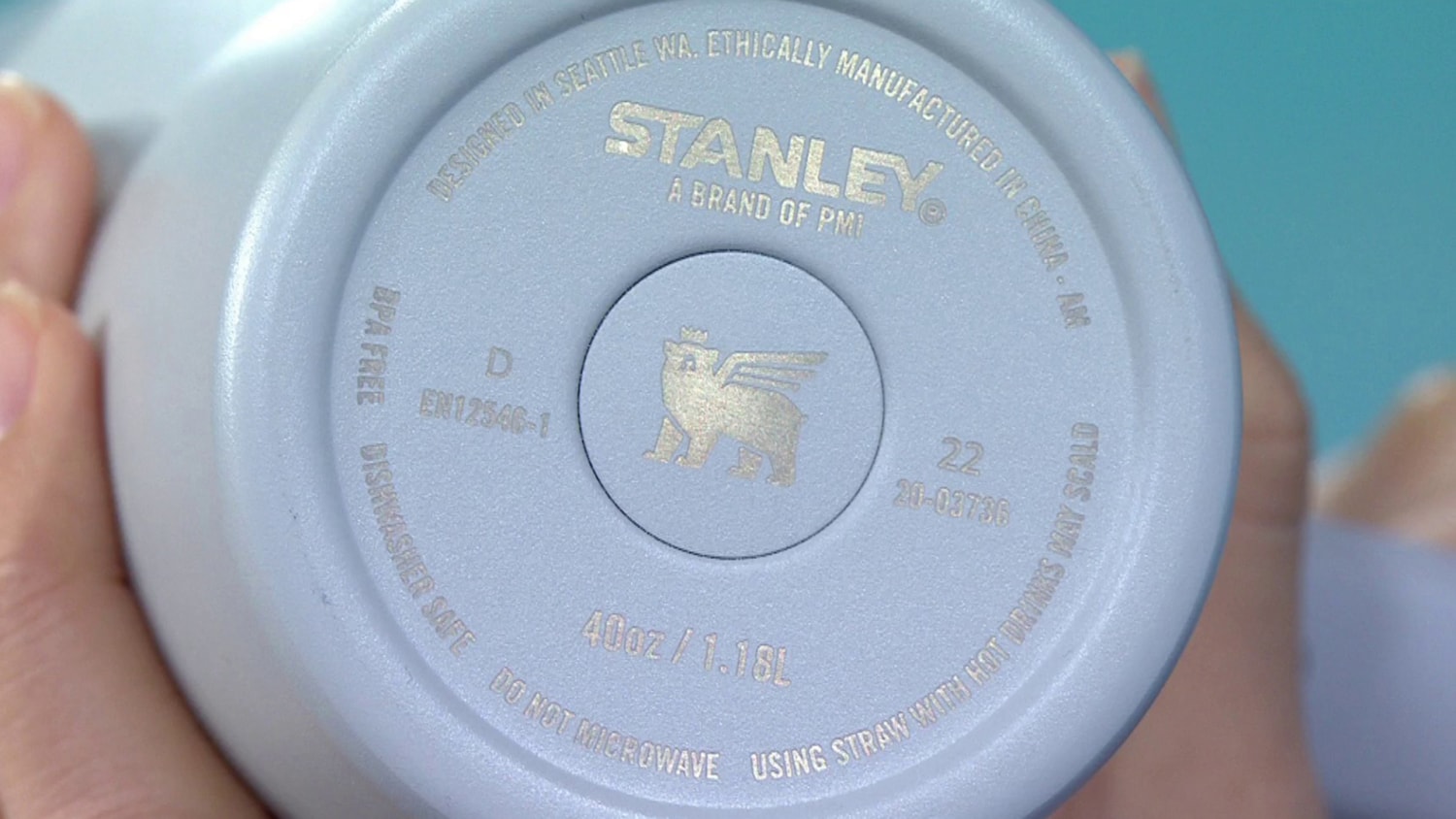Stanley Cups & Lead: Safety Guide & Consumer Update
Are Stanley cups safe to use, especially in light of recent concerns? The answer, as it currently stands, is nuanced: While the cups themselves may contain lead solder in a sealed base, the risk of exposure is considered low under normal use conditions, yet the presence of lead has triggered public concern and calls for greater transparency. This guide delves into the complex relationship between the popular Stanley quencher and lead exposure, offering a comprehensive understanding of the issue.
The surge in popularity of Stanley cups, particularly the Quencher series, has coincided with heightened scrutiny over their safety profile. Social media platforms have become ground zero for discussions, with users sharing home lead test results and sparking a wave of concern. The company, Pacific Market International (PMI), which owns the Stanley brand, has acknowledged the presence of lead in the manufacturing process, specifically in the sealing of the vacuum insulation at the base of the cups. This is a standard practice in the industry, however, the lack of complete transparency has contributed to the current environment of concern.
| Feature | Details | | ------------------- | ---------------------------------------------------------------------------------------------------------------------------------------------------------------------------------------------------------------------------------------------------------------------------------------------------------------------------------------- | | Product Name | Stanley Quencher H2.0 Tumbler | | Manufacturer | Pacific Market International (PMI) | | Primary Use | Beverage Container | | Construction | Stainless steel, plastic lid, straw, and lead solder (sealed base) | | Lead Concern | Lead solder used to seal the vacuum insulation at the base of the tumbler. This is not intended to come into contact with the drink. | | Public Response | Concerns and legal actions regarding disclosure of lead content | | Safety Features | The lead is encapsulated and sealed under a stainless steel disc, not meant to come into contact with the drink. The base must be breached for lead exposure to become a risk. | | Cleaning | Dishwasher safe for the cup body, hand wash recommended for lids and straws. | | Size | Available in various sizes, including 30 oz | | Reference Website| Stanley Official Website |
- The Ultimate Guide To Gabbie Marshalls Wikipedia Page
- David Muirs Wife Uncovering The Personal Life Of The Acclaimed Anchor
To fully understand the safety of Stanley cups, it's essential to examine the complete history of the brand. Founded in 1913 by William Stanley Jr., the Stanley brand quickly became synonymous with durable, reliable outdoor gear. The brand's initial success came from its innovative use of vacuum insulation, a technology that kept beverages hot or cold for extended periods. This core principle remains a key selling point of Stanley products today, including the Quencher series. The rugged design appealed to outdoor enthusiasts, travelers, and anyone seeking drinkware that could withstand the rigors of daily life. Over time, Stanley has been produced by several companies and is currently owned by Pacific Market International (PMI), a subsidiary of the Havi Group.
The materials used in the construction of Stanley cups are key to understanding the lead issue. The primary component is stainless steel, which is known for its durability, resistance to corrosion, and food-grade safety. The vacuum insulation, a crucial feature for temperature regulation, is achieved through a double-walled design. To create the vacuum seal, lead solder is used at the base of the cup. This is standard practice for many insulated drinkware manufacturers, as lead solder is effective in creating a robust seal. The lead is typically sealed under a stainless steel disc, preventing direct contact with the contents of the cup. Many Stanley cups come equipped with a plastic lid and straw, these are generally manufactured from BPA-free plastics. These materials contribute to the functionality, aesthetics, and overall longevity of the cups.
The safety regulations governing consumer products are designed to protect public health. In the United States, products intended for food or beverage contact are subject to strict testing and certification processes. The Food and Drug Administration (FDA) sets standards for materials used in food contact applications, ensuring that they do not leach harmful chemicals into food or beverages. While the lead solder in Stanley cups is not intended to come into direct contact with the liquid, the potential for exposure has raised concerns. The companys response to the current situation has involved transparent communication and clear messaging about the construction of its products. There is also an increased emphasis on ensuring that the sealing process is performed with extreme care to prevent any risk of lead leaching.
The recent controversies surrounding Stanley cups have brought the potential risks of lead exposure into sharp focus. Lead is a toxic metal that can cause serious health problems, particularly for children and pregnant women. Lead poisoning can affect various organ systems, including the nervous system, kidneys, and cardiovascular system. Symptoms of lead poisoning vary depending on the level of exposure, but they can include developmental delays, learning difficulties, and behavioral problems. The long-term health effects of lead exposure can be severe, emphasizing the importance of preventing any potential exposure. The implications of lead poisoning in the context of the Stanley cup are not only about consumer safety but also the preservation of this iconic product.
Addressing concerns about iron contamination is crucial when evaluating the overall safety of Stanley cups. Although the core issue centers on lead, the materials used in these cups, including stainless steel, can potentially interact with certain substances. Stainless steel is an alloy that consists primarily of iron, chromium, and other elements. While stainless steel is corrosion-resistant, it is not entirely immune to the effects of wear and tear over time. Prolonged use, exposure to harsh detergents, or physical damage to the cup can compromise the protective layer of the stainless steel. The primary concern is the potential for iron leaching, which can alter the taste of the beverage and could pose a health risk. However, the levels of iron leaching are generally considered low and not likely to cause significant harm, according to most health guidelines, iron is an essential element for human health, yet excessive intake or exposure can be a concern.
The processes involved in testing and certifying consumer products are designed to ensure compliance with safety standards. Stanley cups, like other consumer goods, undergo rigorous testing by manufacturers. The goal is to verify that the products meet the required safety standards and do not pose a risk to consumers. These tests can include checking for the presence of harmful substances, assessing the durability of the cup, and evaluating its resistance to extreme temperatures. The certification process involves several steps, including testing the materials used in the cup, evaluating the manufacturing process, and verifying the product's performance. The presence of lead solder in the Stanley cup has brought increased scrutiny to this process. Manufacturers must now provide clear and transparent documentation to confirm that the lead solder is completely sealed and that there is no risk of exposure during normal use. The ongoing testing and certification are critical to maintain consumer confidence and uphold the safety standards of the industry.
Preventing contamination is a top priority for any consumer using a Stanley cup. While the lead solder is not designed to come into contact with the contents of the cup, taking precautions is essential. First, it is important to inspect the cup regularly for any signs of damage, such as dents, scratches, or corrosion. If the base of the cup is damaged, or if there is any reason to suspect that the lead solder has been exposed, discontinue use immediately. Second, it is important to clean the cup properly and to avoid using abrasive cleaners or harsh chemicals that could damage the stainless steel. Wash the cup by hand, as the heat and abrasive nature of dishwashers can potentially compromise the integrity of the materials. Third, be mindful of the temperature of liquids placed inside the cup. While Stanley cups are designed to keep beverages hot or cold, extreme temperatures can sometimes accelerate the breakdown of materials. By adhering to these preventive measures, users can minimize the risk of contamination and ensure that their Stanley cups remain safe for use.
Consumer safety tips are designed to empower users to make informed decisions about their purchases. When using a Stanley cup, it is important to be aware of the potential risks and to take appropriate precautions. First, before using the cup for the first time, carefully inspect it to ensure that there are no visible signs of damage or defects. If any defects are noticed, contact the manufacturer or return the product. Second, read the manufacturer's instructions and follow them carefully. These instructions typically provide guidelines for cleaning, maintaining, and using the cup safely. Third, be mindful of the temperature of the liquids that are placed inside the cup. Avoiding extreme temperatures can help to prevent potential issues. Additionally, be careful about placing the cup in a microwave. While some models may be microwave-safe, it is essential to verify the manufacturer's guidelines before doing so. By following these consumer safety tips, users can minimize their risks and enjoy their Stanley cups with confidence.
Understanding the importance of proper Stanley cup maintenance is essential to ensure the longevity of the product and the safety of its user. Regular maintenance can prevent any potential issues and preserve the cup's functionality. The first step in maintaining your Stanley cup is to clean it thoroughly after each use. While most parts are dishwasher safe, it's recommended to hand wash the lid and straw. It is crucial to remove any residue, such as coffee stains or remnants of sugary drinks, to prevent bacterial growth or the potential for odors. Thorough cleaning can extend the life of the cup. Regularly inspect the cup for any signs of wear and tear, such as dents, scratches, or damage to the base. These are signs of damage to the sealed base, which may indicate that the seal could be compromised. Avoid exposing the cup to extreme temperatures or corrosive substances, as this can damage the materials. By following these simple maintenance tips, you can ensure that your Stanley cup remains safe to use and continues to perform well for years to come.
Exploring alternative options to Stanley cups is an important part of ensuring that you choose the best product for your needs. If you have concerns about lead exposure or any other safety issues, there are many alternative options available on the market. Consider insulated stainless steel water bottles from other reputable brands, which often offer similar functionality and durability. Glass water bottles with protective silicone sleeves can be another option, providing a clear view of the contents and eliminating concerns about metal leaching. Consider ceramic-lined or enameled bottles. These are a good alternative, as they are generally considered safe and non-reactive. For those concerned about the potential for contamination, consider choosing a cup with a design that allows for easy inspection and cleaning. Selecting the right alternative depends on your specific needs and preferences. By exploring the various options, you can make an informed decision and select the best product for your health and safety.
In conclusion, the scrutiny surrounding Stanley cups and lead exposure highlights the need for ongoing vigilance in consumer product safety. While the lead solder used in the construction is not intended to come into contact with the contents, the presence of lead has understandably raised public concerns. The company's response, along with ongoing testing and improved transparency, are crucial for ensuring consumer confidence. Consumers can proactively protect themselves by inspecting their cups regularly, following the manufacturer's instructions, and considering alternative options if necessary. By staying informed and making informed choices, users can make sure their choice is safe, and enjoy the benefits of their drinkware with confidence.



Detail Author:
- Name : Trey Powlowski
- Username : istreich
- Email : fcremin@upton.com
- Birthdate : 2006-07-31
- Address : 37070 Stark Mount Suite 373 Thompsonshire, AK 46999-2741
- Phone : +1-202-268-0763
- Company : Gleichner-Krajcik
- Job : Building Inspector
- Bio : Odit beatae corporis dolores reprehenderit. Minus quam exercitationem ad vero similique ullam cumque aliquam. Autem et aut non quia ut non sed. Eum tempore atque praesentium voluptatem.
Socials
twitter:
- url : https://twitter.com/savanna_official
- username : savanna_official
- bio : Sapiente dolor molestias qui voluptate ea. Sapiente perferendis quia neque et dolor. Quos repudiandae corporis aliquam eveniet libero aliquam.
- followers : 6554
- following : 2958
tiktok:
- url : https://tiktok.com/@hills
- username : hills
- bio : Non inventore ut dolorem necessitatibus aut voluptas omnis.
- followers : 2298
- following : 2960